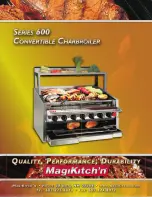
3
INSTALLATION REQUIREMENTS
STATUTORY REQUIREMENTS
3.1
FLUE TERMINAL POSITION
3.3
GAS SAFETY (INSTALLATION AND USE) REGULATIONS 1996 (AS
AMENDED)
The appliance is suitable only for installation in GB and IE and should
be installed in accordance with the rules in force.
In GB, a CORGI Registered Installer must carry out the installation. It
must be carried out in accordance with the relevant requirements
of the:
Gas Safety (Installation and Use) Regulations
The appropriate Building Regulations either The Building Regulations,
The Building Regulations (Scotland), Building Regulations (Northern
Ireland).
The Water Fitting Regulations or Water Byelaws in Scotland.
The Current I.E.E Wiring Regulations.
Where no specific instructions are given, reference should be made to
the relevant British Standard code of Practice.
In IE, the installation must be carried out by a Competent Person and
installed in accordance with the current edition of I.S.813 “Domestic
Gas Installations”, the current Building Regulations and reference
should be made to the current ETCI rules for electrical installation.
It should also be in accordance with the relevant recommendations in
the current editions of the following British Standards and Codes of
Practice: BS 5449, BS 5546, BS 5440-1, BS 5440-2, BS 6798, BS 6891,
Institute of Gas Engineer document IGE/UP-7, BS 7074 (expansion
vessel), BS 5482 (propane installations) and IS813 for IE.
IMPORTANT NOTE:
Manufacturer's instruction must NOT be taken in
any way as overriding statutory obligations.
APPLIANCE LOCATION
3.2
THE FOLLOWING LIMITATIONS MUST BE OBSERVED WHEN SITING
THE APPLIANCE:
a)
The appliance is not suitable for external installations. The position
selected for installation should be within the building, unless
otherwise protected by a suitable enclosure and MUST allow
adequate space for installation, servicing and operation of the
appliance and for air circulation around it (Section 2.4 and 3.4).
b)
This position MUST allow for a suitable flue system and terminal
position. The appliance must be installed on a flat vertical wall,
which is capable of supporting the weight of the appliance and any
ancillary equipment.
c)
If the appliance is to be fitted in a timber framed building it should
be fitted in accordance with the British Gas publication 'Guide for
Gas Installations In Timber Frame Housing', Institute of Gas
Engineers document IGE/UP-7. If in doubt, advice must be sought
from the Local Gas Supplier.
d)
The appliance is approved to a protection rating of IP20. Therefore
if the appliance is to be installed in a room containing a bath or a
shower, any electrical switch or control utilising mains electricity
must be so situated that it cannot be touched by a person using the
bath or shower. Attention is drawn to the requirements of the
current BS 7671 (I.E.E Wiring Regulations) and in Scotland the
electrical provisions of the Building Regulations applicable in
Scotland.
DETAILED RECOMMENDATIONS FOR FLUE INSTALLATION ARE
GIVEN IN BS 5440-1. THE FOLLOWING NOTES ARE FOR GENERAL
GUIDANCE.
a)
The appliance MUST be installed so that the terminal is exposed to
the external air.
b)
It is important that the position of the terminal allows free passage
of air across it at all times.
c)
It is ESSENTIAL TO ENSURE that products of combustion
discharging from the terminal cannot re-enter the building or any
other adjacent building, through ventilators, windows, doors, other
sources of natural air infiltration, or forced ventilation / air
conditioning.
d)
The minimum acceptable dimensions from the terminal to
obstructions and ventilation openings are specified in Figure 6.
e)
If the terminal discharges into a pathway or passageway check that
combustion products will not cause nuisance and that the terminal
will not obstruct the passageway.
f)
Where the lowest part of the terminal is fitted less than 2000 mm (78
in) above the ground, above a balcony or above a flat roof to which
people have access, the terminal MUST be protected by a purpose
designed K6 terminal guard (optional extra: Part No. 951507).
g)
The air inlet / flue outlet MUST NOT be closer than 25 mm (1 in) to
combustible material.
h)
Condensing appliances have a tendency to form a plume of water
vapour at the terminal under certain operating conditions. This is
normal but positions where this would cause damage or a nuisance
should be avoided. Consideration should be given to the dispersal of
the plume in terms of adjacent surfaces and neighbouring
properties. A special flue terminal, (Kit C), is available to raise the
flue discharge point; use of this terminal will limit the maximum
flue length available.
For further information contact: Halstead Glen Dimplex service
helpline Tel: 0844 371 1111.
VENTILATION REQUIREMENTS
3.4
Detailed recommendations for air supply are given in BS 5440-2.
The following notes are for general guidance.
a)
It is not necessary to have a purpose provided air vent in the room
or internal space in which a room-sealed appliance is installed.
b)
Cupboard or compartment ventilation is not necessary for a room-
sealed appliance providing that the minimum clearances are
maintained.
c)
Where an open flued, (B23), system is used, then an air vent must be
provided in the same room or internal space as the flue duct air
inlet, with a minimum free-area of at least:
VBX 30
117 cm
2
VBX 18
57 cm
2
d)
If the appliance is installed in a room or internal space with other
opened flued appliances, then the size of the air vent necessary
should be calculated in accordance with BS 5440-2 Table 2.
11
SINGLE PAGES 20/9/10 09:59 Page 13
Содержание EDEN X Type VBX 30
Страница 29: ...27 7 INTERNAL WIRING DIAGRAMS 31 7 1 FUNCTIONAL FLOW WIRING DIAGRAM SINGLE PAGES 20 9 10 10 00 Page 29...
Страница 40: ...51 1 5 9 2 6 10 3 7 11 4 8 12 38 SINGLE PAGES 20 9 10 10 01 Page 40...
Страница 41: ...SINGLE PAGES 20 9 10 10 01 Page 41...
Страница 42: ...SINGLE PAGES 20 9 10 10 01 Page 42...














































